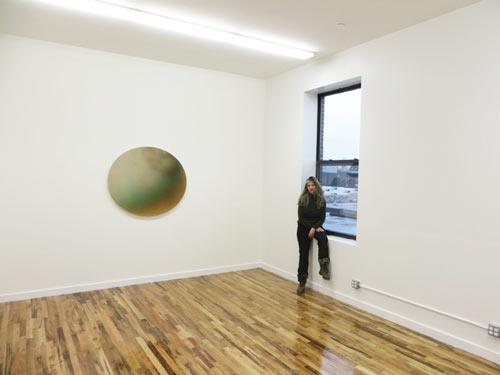
Two 'skin portraits' in the REALITY exhibition.
We recently interviewed artist Gwen Hardie, whose 'skin portraits' are featured in the
'REALITY' exhibition at the Walker Art Gallery:
The exhibition at the Walker is called 'REALITY'. How important is it to you to capture 'reality' in your work?
I choose to think of 'reality' as a method of grounding myself in what I know through direct experience; hence the simple subject of the body and its surfaces; the awareness of sunlight, the impact it has on everyday life.
Your work in ‘REALITY’ has changed considerably since your painting 'Cleave (I)' , which won a prize at the John Moores Painting Prize in 1997. What has influenced this change?
A desire to make work which is rooted in the body and the physical world; where the image can express the real experience of being alive and bound by the body. Countering this is the role of light in my work, which gives space and distance to the close up view. I needed to observe again from life by examining light; how sunlight reflects and penetrates surfaces.
Why do you choose to work on round or oval canvases?
The shape of a circle/oval contains a complete world of focus within it, much better than a rectangular format can perceptually, because you can't add logically to the shape, there are no parallel lines.

Gwen Hardie in her studio.
I also like the associations with macro and micro forms in space, the similarity to the shape of the eye that we see through, the circular pupil within the ovular orb.
What sort of painting techniques do you use?
Blending wet into wet oil paint, using large flat brushes so that the paint can be applied and manipulated with great speed. It's something that viewers rarely get when they see my paintings; every work is completed in one day. Of course I make many attempts at that one painting over weeks and keep taking the paint off, as the image gets more and more complex and clear in my mind.
Your ‘skin portraits’ are often magnified to the point of abstraction, which can result in varied reactions from viewers. Is this something you think about when beginning each painting?
People's reactions to the idea of such a close up vary from repulsion to a sense of being transported. The fact that the viewpoint is determined by light as much as skin means they are far from a literal dermatologist's view and encourage multiple readings which I welcome.
Gwen Hardie in conversation
To find out more about Gwen and her work, watch her in conversation with curator and artist Chris Stevens:

 Two 'skin portraits' in the REALITY exhibition.
We recently interviewed artist Gwen Hardie, whose 'skin portraits' are featured in the 'REALITY' exhibition at the Walker Art Gallery:
Two 'skin portraits' in the REALITY exhibition.
We recently interviewed artist Gwen Hardie, whose 'skin portraits' are featured in the 'REALITY' exhibition at the Walker Art Gallery:
 Gwen Hardie in her studio.
I also like the associations with macro and micro forms in space, the similarity to the shape of the eye that we see through, the circular pupil within the ovular orb.
Gwen Hardie in her studio.
I also like the associations with macro and micro forms in space, the similarity to the shape of the eye that we see through, the circular pupil within the ovular orb.
